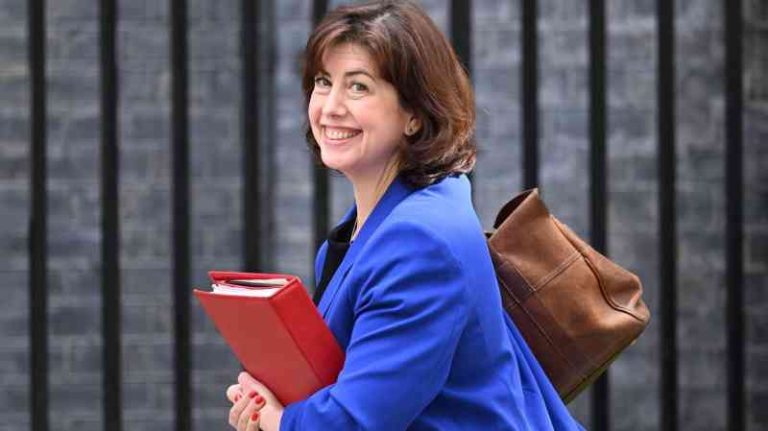You can’t tax your way to stronger economic growth
When writing about tax, it is good to start with a quote. Today’s was going to be, “The only things certain in life are death and the fact that taxes will go up in the autumn.” Then I came across one from John Maynard Keynes, no less, from 1944: “The avoidance of taxes is the only intellectual pursuit that still carries any reward.” I hope he said it.
Sir Keir Starmer, in his far from sunny speech in the Downing Street garden, all but confirmed tax increases in the October 30 budget. These will be “painful” and those with the broadest shoulders will bear the biggest burden.
That is a form of language also used by the Tories and was in the context of a further clampdown on non-doms. But, going back to Keynes, it will have had the tax-avoidance industry rubbing its hands in anticipation of serious business to come.
How hard is it to raise tax when you have ruled out increases in the four main ones: income tax, VAT, national insurance (NI) and corporation tax? How much harder is it if you have also ruled out raising taxes on “working people”?
Manifesto promises are often broken, and you cannot rule out that this is what this softening up exercise is all about. But it would be a surprise if the government went back on its pledge not to increase the main taxes.
The “working people” pledge is trickier because Labour inherited the Tory policy of freezing income tax (and national insurance) allowances and thresholds until 2028, a sustained big stealth tax on working people. It is silly, in general, to pretend that you can increase tax while avoiding working people.
What taxes might rise? On every occasion when asked, Labour has refused to rule out increasing capital gains tax (CGT). It is not a big tax, set to raise £15 billion this year, according to the Office for Budget Responsibility (OBR).
It is also hard to see it providing rich pickings. There are lower and higher rates of CGT, mainly depending on whether people are basic or higher-rate taxpayers. The government’s own ready reckoner suggests that raising the higher rates by ten percentage points (from 20, 24 or 28 per cent depending on the asset) would eventually reduce revenue by £2 billion a year because of behavioural changes. Increasing the lower rates would net extra annual revenue in the low tens of millions. This is not much in public finance terms.
The chancellor might look at pension tax relief, something mooted for years. A new report from left-leaning think tank the Fabian Society, titled Expensive and Unequal, argues for replacing the current system — in which higher earners get pension tax relief at 40 or 45 per cent, their highest marginal rate of tax — with flat-rate relief at 25 or 30 per cent. Combined with other measures, such as limiting tax-free lump-sum payments to £100,000 and making employers pay NI on pension contributions, you can get to over £10 billion a year.
On national insurance, some have got excited about how ministers tend to talk about employees’ NI when ruling out any increase. Could this leave the door open to raising employers’ NI, the “tax on jobs”? That would be very odd, given the disparity between the two rates already: 13.8 per cent for employers, 8 per cent for employees.
An alternative might be to increase NI above the upper earnings limit, just over £50,000. As its name suggests, this used to be a limit, with no additional contributions paid, but now contributions are levied at a 2 per cent rate above it. A tax-raising chancellor could increase that, though hitting plenty of “working people” who earn more than the limit.
Then there is fuel duty, frozen since 2011 because successive chancellors feared the backlash from motorists. As a first step, chancellor Rachel Reeves could reverse the 5p emergency duty cut announced by Rishi Sunak after the Russian invasion of Ukraine. As a second, she could restore indexation of the duty.
Finally, in what may not be a comprehensive list, the chancellor could require the Bank of England either not to pay banks interest on their reserves at the central bank, or to do so at a reduced rate. This, proposed by Reform UK in the election campaign, would amount to a backdoor tax on banks.
The common feature of many of these changes is that they would make a messy tax system even messier, and painful in more ways than one. As I say, they would provide plenty of work for tax advisers and accountants. I am not recommending it, but George Osborne’s biggest tax increase, hiking VAT from 17.5 to 20 per cent, had the virtue of simplicity.
How did we get into a situation where tax increases are needed, immediately after the last government was cutting them by reducing employee NI? Those cuts themselves added to the pressure on the public finances.
The big reason is that public spending is a lot higher than it was. We hear a lot, rightly, about the overall tax burden being the biggest since the late 1940s, but public spending is also historically high.
Immediately prior to Covid, public spending was the equivalent of 39.6 per cent of gross domestic product (GDP). This year it is projected to be 44 per cent, having surged to a peacetime record of 53 per cent during the pandemic. It is predicted to settle at 42.5 per cent in the late 2020s, three percentage points above pre-Covid levels, but that was based on spending projections regarded as unrealistic, including by the OBR. It may be that, instead, spending settles at between 43 and 44 per cent of GDP.
Tax, meanwhile, was last projected by the OBR to rise to 37.1 per cent of GDP, out of total government revenues of 41.2 per cent of GDP. That 37.1 per cent was nudged up to a projected 37.4 per cent when Labour published its manifesto and confirmed VAT on private school fees, an extension of the energy profits levy and other taxes.
Now, it is on the brink of going up further, to a clearer peacetime high, as the government is forced to adjust the unrealistic spending projections it inherited.
It is all a little worrying. Growth would make squaring the circle easier, but the mood that Labour’s gloomy approach is generating, and the prospect of growth-limiting tax hikes, makes that task much harder.
The government is looking through the wrong end of the telescope. If the priority is growth, that means growth-generating tax reforms, not just looking for revenue down the back of the Treasury sofa. It also means prioritising the policies and the public investment that will provide the stronger medium and long-term growth targeted by Labour. Otherwise, by the time we get over this autumn’s promised pain, it may be too late to stop the economy sinking back into stagnation.
PS
After my piece last Sunday on trade, many asked me about the consequences of chronic trade deficits. To answer, let me introduce another measure, the current account. Usually, the trade deficit accounts for the lion’s share of the current account deficit, though not always.
Last year, the UK ran a trade deficit in goods and services of £33.4 billion, but the current account deficit was £88.5 billion. That was because this country paid out more to overseas investors and businesses than was received in income here — net negative income of £55 billion.
Every economics student is taught that the balance of payments has to balance — current account deficits are balanced by capital account surpluses, net inflows of capital. However, at one time very strong, the UK’s net international investment position — what we own abroad versus what foreigners own in the UK —is now also heavily negative.
The UK has plenty of investments abroad, £13,700 billion (£13.7 trillion) at the end of the first quarter, but this was outweighed by foreign investment in the UK of £14.4 trillion, leaving negative net international investment of £706 billion. The UK’s net international investment position turned negative a quarter of a century ago and, with one or two exceptions, has remained significantly negative since.
Running a trade deficit and paying out income to foreigners means having to attract capital inflows. This also means a combination of a weak currency and relatively higher long-term interest rates. The pound has been having a good run but is still 20 per cent below its 10 and 30-year dollar average of $1.65 before 2016. UK 10-year government bond yields are the highest in the G7, including Italy.
Trade and current account deficits do not have the immediate and dramatic effects of the past, but they do have consequences.






